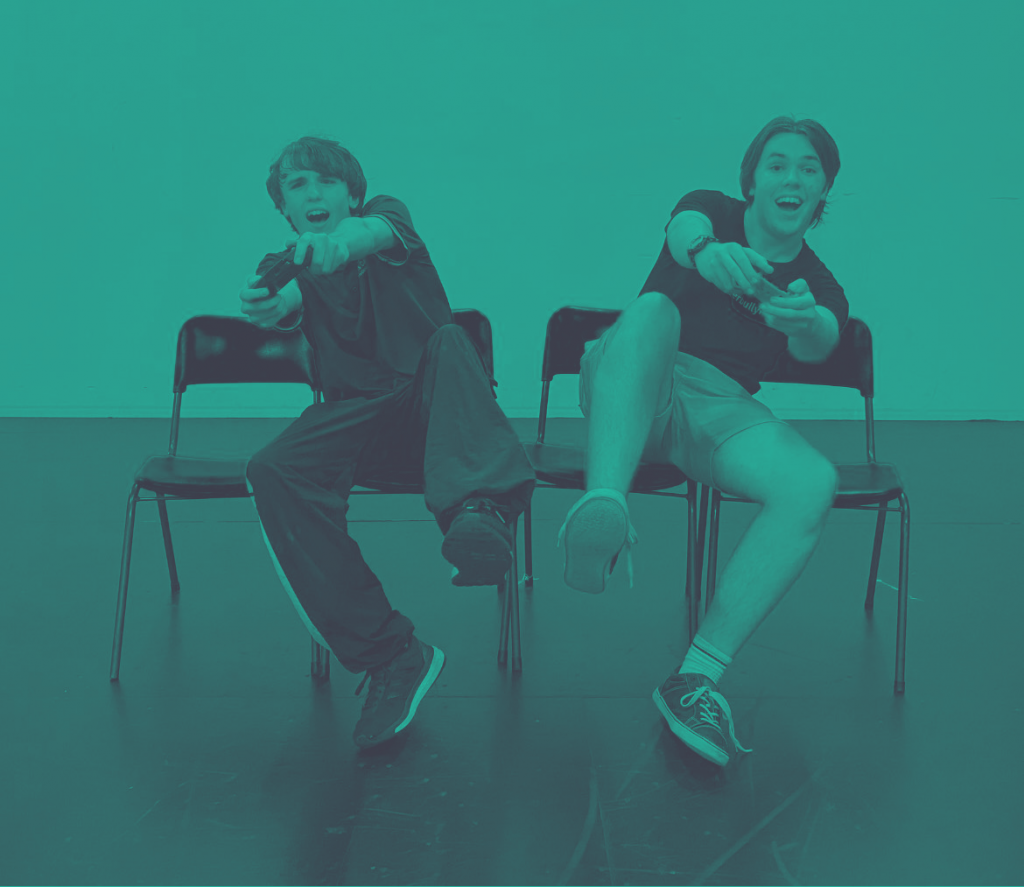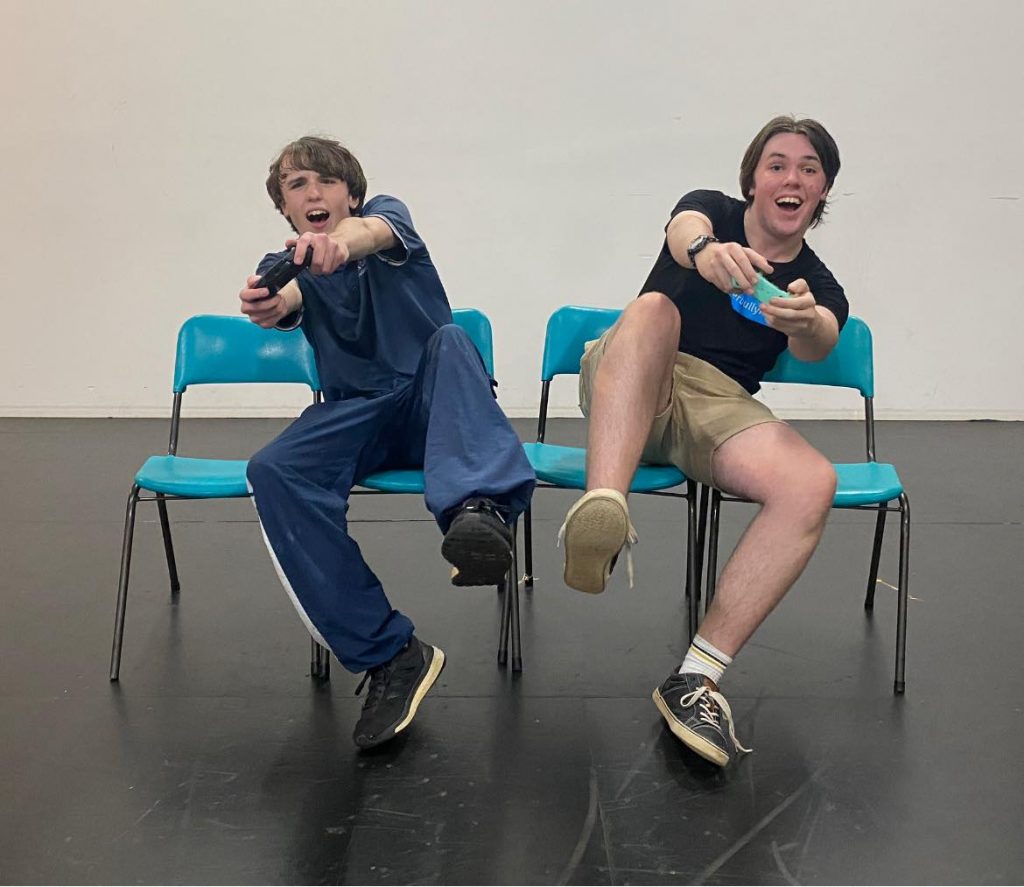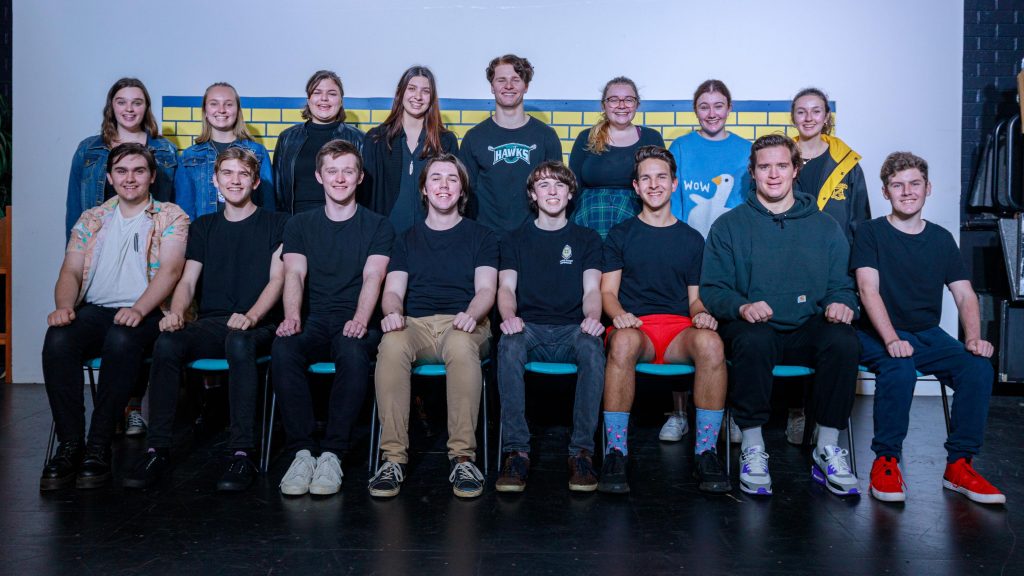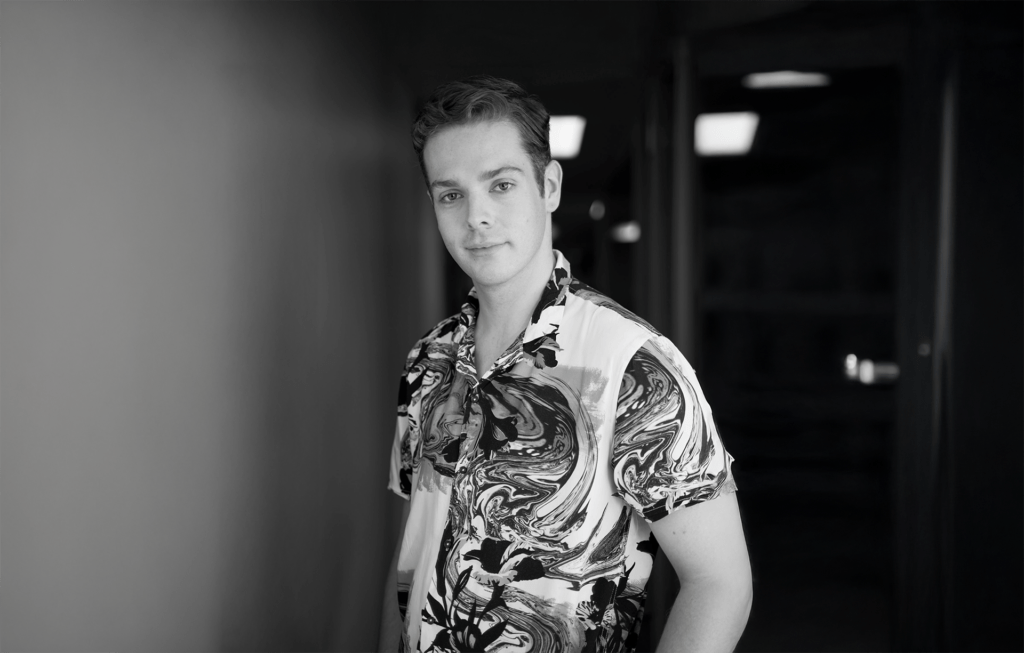
‘Be More Chill’ // Nicholas Joy and Britney Cawkwell
‘Be More Chill’ was dorky.
With layers of dorky teenage angst, futuristic personality upgrades, and a strange fascination with overly manufactured sugar drinks, ‘Be More Chill’ is a pretty bizarre adventure; one that the cast and crew behind ‘Be More Chill’ in Toowoomba have tackled like seasoned travellers.
A relatively new musical, ‘Be More Chill’ premiered in 2015, and follows the same basic story of the novel that inspired it – a teenage boy, Jeremy, struggles with identity and a sense of belonging, so he turns to stimulants to “make himself better”, only to find he is enough and the people who matter will like him if he just accepts himself. The show is like a cocktail of every adolescent musical, with elements of ‘Heathers’, ‘Dear Evan Hansen’, and ‘High School Musical’, among others. What ‘Be More Chill’ brings to the table is its unique flavour of dork.
Supported by a six-piece live band and musically directed by Benjamin Ryan, the performer’s vocals steered towards pop-rock rather than classic musical theatre or jazz. Some simple but effective LEDs were positioned both above and to the right side of the stage, but overall the technical elements were kept basic. Lighting design, by Riley Silk, did not detract from the show in any way and instead worked to support the intense energy of the performers. A highlight of the lighting was in the spasmodic reds and blues that flashed whenever a character was taken over by “The Squip” (an artificial intelligence that makes one “cooler”).
Strategically, the LEDs made the minimalist set, utilised throughout the show, adjustable. Two simple moveable flats in a neon yellow brick, and a striking geometric line feature on the floor, created with reflective tape, hinted at the futuristic elements of the story, and adapted alongside the light colours. This allowed for a range of moods, most notably the one’s spent inside Jeremy’s head.
Costumes were mostly 21st century youth attire, with the exception of character Michael Mell, whose outfits in each scene were cleverly crafted and reflected the character’s shifts in mood. These pieces included an 80s style denim jacket with geek-culture references, a long sleeve black tee with CREEP across the chest, and small kanji underneath. This nod to the scene’s content, and the show’s allusion to Japanese culture, were explicit in this costume piece. Makeup coordinator, Lilliana Cowen, deserves a mention for the face designs that appeared on characters affected by “The Squip”. These intricate blue technology patterns grew from scene to scene, indicating a character’s struggle was increasing. They were beautifully crafted and cleverly executed.
Direction by Nicholas Joy used repetition, time manipulation and exaggeration to engage the audience and highlight the underlying themes. To create the school environment and sense of disconnect experienced by Jeremy, the ensemble crossed paths, circled one another and exited sporadically – leaving Jeremy to his isolation. In other scenes both individual characters and the ensemble worked in slow motion to emphasise the inner monologues of others. Exaggerated, often tongue-in-cheek, physicalities dominated the piece, which also reflected the light-hearted nature of the show.While adolescent insecurities and self-consciousness are important issues, Joy has allowed the audience to engage with the conversation in a show that doesn’t take itself too seriously.
Choreography by Jackson Poole was a blend of jazz and retro-pop, with homage paid to musicals like ‘Fame’ and ‘Footloose’. Poole used the ensemble to connect scenes and, in partnership with Joy’s direction, manipulate time so as to engage the audience. While the specific timeline of the plot is not explicitly stated, the journey of self-discovery seems to traverse several months. Combining this with a mixture of inner monologue meeting the digital world, the whole show becomes a statement about the illusion of past, present and future. In short, Poole’s choreography added logic and flow to the sometimes chaotic and complex plot.
In the leading role of Jeremy Heere, William Thomas was perfectly cast. He gave an innocent but energetic performance that carried the show both in stage presence and vocal ability. A young Eddie Redmayne, Thomas was able to shift the character with ease between his dorky original nature and the puppeted “chill guy” of the later scenes. His diversity and technique was admirable.
Complimenting this with a stellar performance was Fynn Walmsley in the supporting role of Michael Mell. A rock music appearance met with a gamer-stoner personality, Mell required a chill masculinity, which Walmsley nailed.
As the love interest Christine Canigula, Rachel Peake sang beautifully, and her duet with William Thomas in the final scenes was the highlight of the show. Her physical acting abilities were put on show with slow motion scenes, a spasmodic episode and a play-within-a-play. Peake is a natural on the stage.
Marcus Johnston was suave and engaging as antagonist, “The Squip”. He managed to control the stage without stealing focus, and sounded vocally experienced. His pants were too tight, but he wore them well.
The standout vocal performance of the show came from Lauren Baryla and Kate Hudson-James as Chloe Valentine and Brooke Lohst respectively. These two performers, sometimes accompanied by Maeve Sloss as Jenna Rolan, harmonised wonderfully, and their Mean Girls-esque personas were met with subtle but effective reactions to every moment on stage.
Other notable performers include Nikolas Elwell as Rich Goranski, Nicholas Wigan as Jake Dillinger, and Pierce Hardy as Mr Heere/Reyes.
As an ensemble, the performers were cohesive, extremely energetic and always ‘on’. Even so, Micah Adamson took it to the next level – extending the punches, dance moves and sass with every small action.
Overall, the theatrical elements worked well together to present a clean and powerful preview performance. Produced by Nicholas Joy and Britney Cawkwell, in association with Toowoomba Philharmonic Society, ‘Be More Chill’ had many comedic elements paired with quality dance, vocals and scene work. It made for an enjoyable night out, and celebrated the talent of Toowoomba’s young people.
‘Be More Chill’ performs until Sunday, 20 June, 2021 at Toowoomba Philharmonic Society. The season is sold out, but for more information about future projects visit the Toowoomba Philharmonic Society website.








